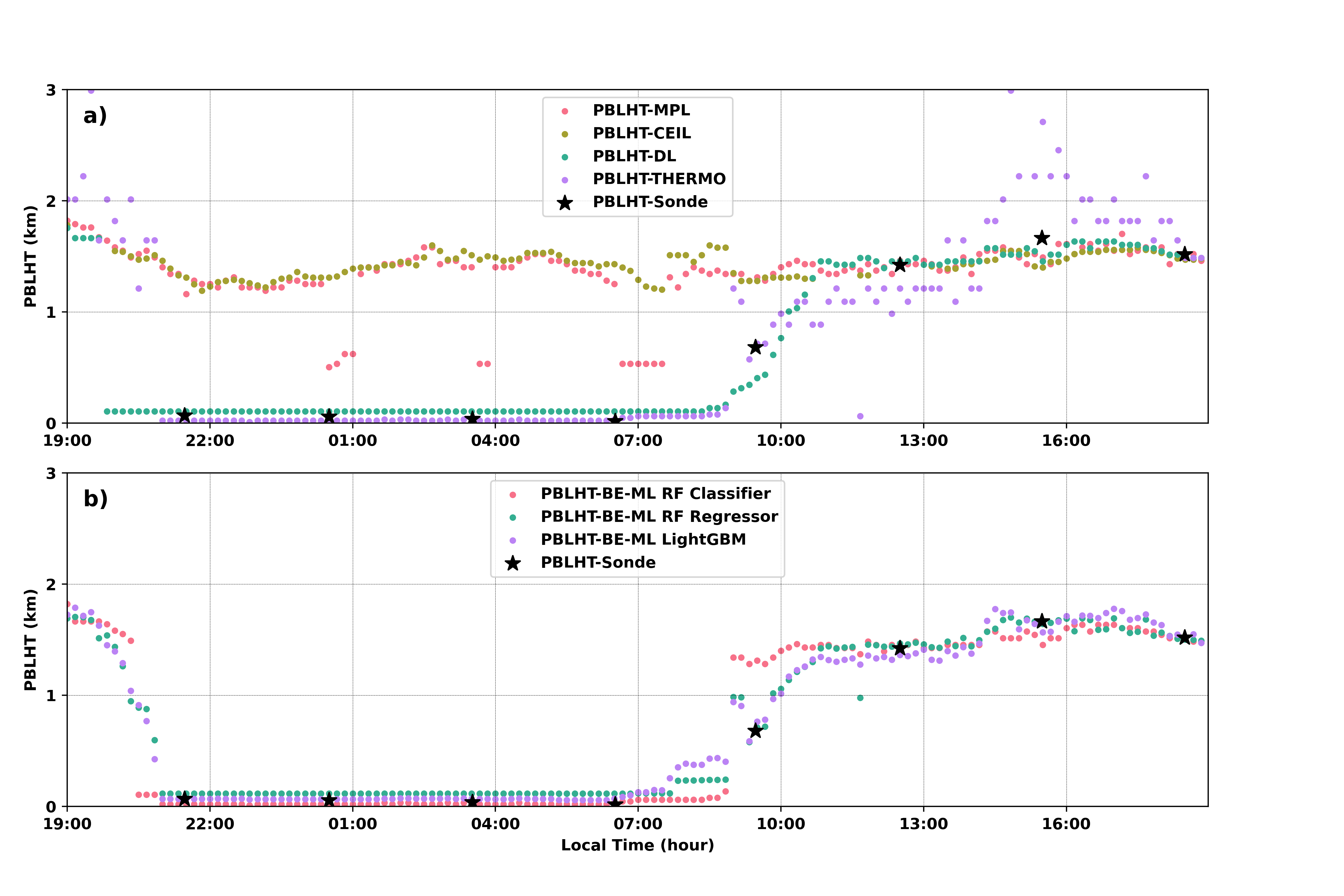New Machine Learning Product Provides Best-Estimate Planetary Boundary-Layer Height Science
Submitter
Zhang, Damao — Pacific Northwest National Laboratory
Area of Research
Atmospheric Thermodynamics and Vertical Structures
Journal Reference
Zhang D, J Comstock, C Sivaraman, K Mo, R Krishnamurthy, J Tian, T Su, Z Li, and N Roldán-Henao. 2025. "Best estimate of the planetary boundary layer height from multiple remote sensing measurements." Atmospheric Measurement Techniques, 18(14), 10.5194/amt-18-3453-2025.
Science

An example of PBLHT estimates on July 12, 2019, at the ARM SGP atmospheric observatory shows a) PBLHT estimates from individual remote sensing measurements and the PBLHT-Sonde value-added product, and b) PBLHT-BE-ML predictions from the three ML models and PBLHT-Sonde. Image is courtesy of the journal
This work introduces a machine learning (ML) approach to generate a best-estimate planetary boundary-layer height (PBLHT-BE-ML) by integrating four PBLHT estimates obtained from different remote-sensing measurements.
Impact
PBLHT is a key parameter for atmospheric process studies and numerical model simulations. Our approach provides reliable, continuous PBLHT estimates that can enhance understanding of boundary-layer evolution and support more accurate estimates of surface-atmosphere flux exchanges. This method has been implemented as an ARM value-added product, which will be made available through the ARM Data Center at the beginning of 2026.
Summary
Remote sensing measurements have been widely used to provide a high-temporal-resolution estimate of PBLHT. Each remote-sensing approach offers unique strengths and faces different limitations.
We used ML models to generate PBLHT-BE-ML by integrating four PBLHT estimates derived from micropulse lidars (PBLHT-MPL), ceilometers (PBLHT-CEIL), Doppler lidars (PBLHT-DL), and thermodynamic profiles retrieved using Raman lidar and atmospheric emitted radiance interferometer measurements (PBLHT-THERMO). Three ML models—Random Forest (RF) Classifier, RF Regressor, and Light Gradient-Boosting Machine (LightGBM)—were trained on a data set from 2017 to 2023 at ARM’s Southern Great Plains (SGP) atmospheric observatory. The training data included radiosonde measurements, various remote-sensing PBLHT estimates, and data on atmospheric and meteorological conditions.
Evaluations indicated that PBLHT-BE-ML from all three models improved alignment with another ARM value-added product, PBLHT derived from Radiosonde data (PBLHT-Sonde). In addition, results showed that LightGBM demonstrated the highest accuracy under both stable and unstable boundary-layer conditions.
Keep up with the Atmospheric Observer
Updates on ARM news, events, and opportunities delivered to your inbox
ARM User Profile
ARM welcomes users from all institutions and nations. A free ARM user account is needed to access ARM data.


















